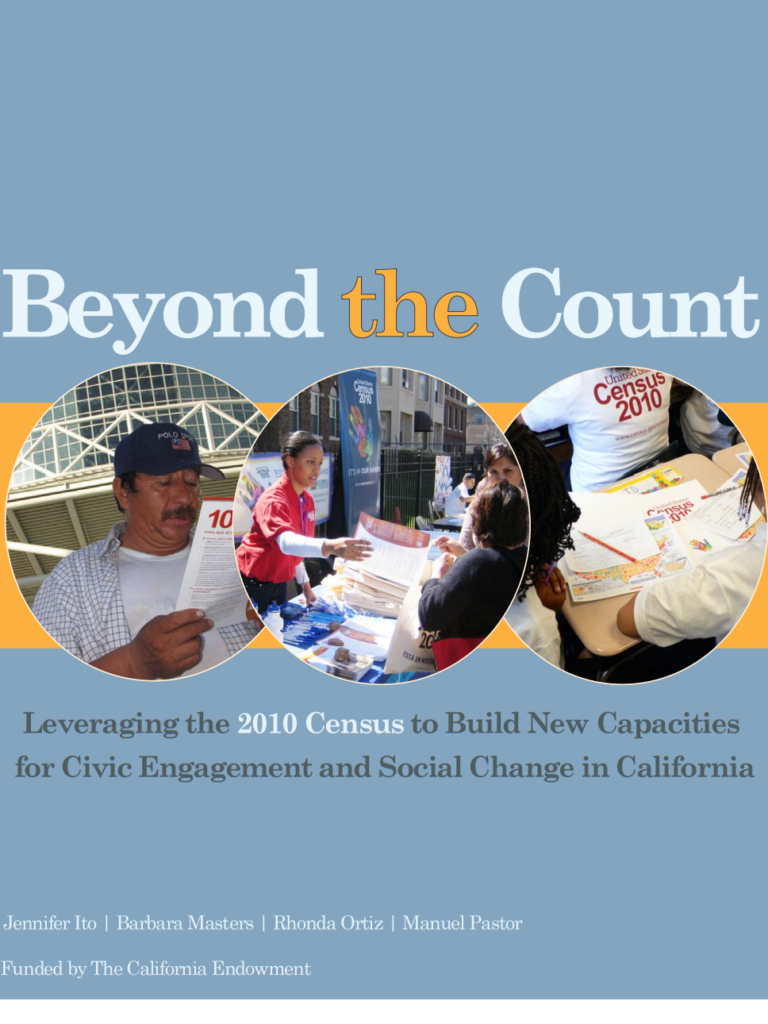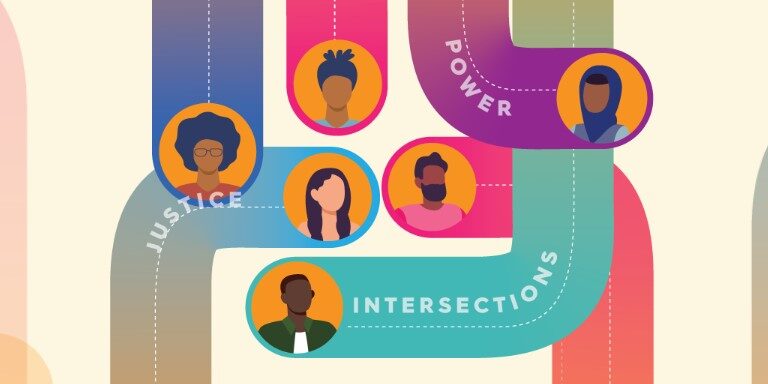
December 2011
By Jennifer Ito, Barbara Masters, Rhonda Ortiz, and Manuel Pastor
Funded by The California Endowment
Please note: reports dated earlier than June 2020 were published under our previous names: the USC Program for Environmental and Regional Equity (PERE) or the USC Center for the Study of Immigrant Integration (CSII).
We often proudly proclaim that our system is “one person, one vote,” but many are disenfranchised and even more are disillusioned. The U.S. Census is among the most democratic of our institutions: in the once-a-decade count, everyone is important and everyone is equal—and getting where they live right is written into our Constitution. The efforts to make sure that the “hard-to-count” are included in the official count are the same sets of skills that can repair our ailing political system.
Beyond the Count: Leveraging the 2010 Census to Build New Capacities for Civic Engagement and Social Change in California, a new report from USC Program for Environmental and Regional Equity (PERE) and funded by The California Endowment (TCE), looks at how California Counts—the coordinated, statewide strategy itself—built and strengthened capacities to engage disenfranchised Californians beyond the count.
Many organizations leveraged the census as an opportunity to practice new outreach strategies, lift up other issues of concern to key constituencies, and lay the groundwork for new alliances. After all, many of the methods for increasing the count—canvassing, phoning, media events, and one-on-one education—are the same for mobilizing residents around electoral or policy campaigns. It also represented an extraordinary moment in which foundations modeled what they often call upon their grantees to do: collaborate, align efforts, and maximize impact.
Beyond the Count looks at California Counts as a study for what a social movement frame can achieve: make progress on immediate issues while planting seeds for longer-term, larger-scale change. While policy solutions are needed, lasting change will come when there is a deeply rooted movement that can help shape policy solutions and improve the prospects for California’s most vulnerable residents. Going beyond the count to what really counts—an engaged public that can change the trajectory of the Golden State—is critical.



